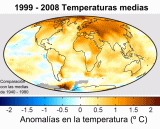Are teens such as kids from 12-18 be able to do what they can for global warming? If not then how can adults participate in it? We have a planet that we take resources from it but do not give anything back in return.
replied to: lemmon89
Replied to: Are teens such as kids from 12-18 be able to do...
Yeah everybody can take part to help globel warning but my opinon i think its to late as the weather is going crazy now.
china, england and us are the biggest poluters on the planet, i am not picking on them countries as i come from australia.
i name 10 things you can do or adults can particitpate in it as well.
1, Reduce, Reuse, Recycle
get in an habbit to use reusable products instead of disposables like minimal packaging (including the economy size)this will help to reduce waste, recycle paper, plastic, newspaper, glass and aluminum cans. iF rhere is no recycling program at your workplace, school, or in your community,ask people around you to join in to start one such as maybe your friends. By recycling half of your household waste, you can save 2,400 pounds of carbon dioxide annually.
2. Use Less Heat and Air Conditioning
use blankets or put warmer Clothes on to keep you warm etc
instead of using an heater this also saves your parents or your money.
3. Change a Light Bulb
Wherever practical, replace regular light bulbs with compact fluorescent light (CFL) bulbs. Replacing just one 60-watt incandescent light bulb with a CFL will save you $30 over the life of the bulb. CFLs also last 10 times longer than incandescent bulbs, use two-thirds less energy, and give off 70 percent less heat.
If every U.S. family replaced one regular light bulb with a CFL, it would eliminate 90 billion pounds of greenhouse gases, the same as taking 7.5 million cars off the road.
4. Drive Less and Drive Smart
Less driving means fewer emissions. Besides saving gasoline, walking and biking are great forms of exercise. Explore your community mass transit system, and check out options for carpooling to work or school.
When you do drive, make sure your car is running efficiently. For example, keeping your tires properly inflated can improve your gas mileage by more than 3 percent. Every gallon of gas you save not only helps your budget, it also keeps 20 pounds of carbon dioxide out of the atmosphere.
5. Buy Energy-Efficient Products
When it's time to buy a new car, choose one that offers good gas mileage. Home appliances now come in a range of energy-efficient models, and compact florescent bulbs are designed to provide more natural-looking light while using far less energy than standard light bulbs.
Avoid products that come with excess packaging, especially molded plastic and other packaging that can't be recycled. If you reduce your household garbage by 10 percent, you can save 1,200 pounds of carbon dioxide annually.
6. Use Less Hot Water
Set your water heater at 120 degrees to save energy, and wrap it in an insulating blanket if it is more than 5 years old. Buy low-flow showerheads to save hot water and about 350 pounds of carbon dioxide yearly. Wash your clothes in warm or cold water to reduce your use of hot water and the energy required to produce it. That change alone can save at least 500 pounds of carbon dioxide annually in most households. Use the energy-saving settings on your dishwasher and let the dishes air-dry.
7. Use the "Off" Switch
Save electricity and reduce global warming by turning off lights when you leave a room, and using only as much light as you need. And remember to turn off your television, video player, stereo and computer when you're not using them.
It's also a good idea to turn off the water when you're not using it. While brushing your teeth, shampooing the dog or washing your car, turn off the water until you actually need it for rinsing. You'll reduce your water bill and help to conserve a vital resource.
8. Plant a Tree
If you have the means to plant a tree, start digging. During photosynthesis, trees and other plants absorb carbon dioxide and give off oxygen. They are an integral part of the natural atmospheric exchange cycle here on Earth, but there are too few of them to fully counter the increases in carbon dioxide caused by automobile traffic, manufacturing and other human activities. A single tree will absorb approximately one ton of carbon dioxide during its lifetime.
9. Get a Report Card from Your Utility Company
Many utility companies provide free home energy audits to help consumers identify areas in their homes that may not be energy efficient. In addition, many utility companies offer rebate programs to help pay for the cost of energy-efficient upgrades.
10. Encourage Others to Conserve
Share information about recycling and energy conservation with your friends, neighbors and co-workers, and take opportunities to encourage public officials to establish programs and policies that are good for the environment.
These 10 steps will take you a long way toward reducing your energy use and your monthly budget. And less energy use means less dependence on the fossil fuels that create greenhouse gases and contribute to global warming.

